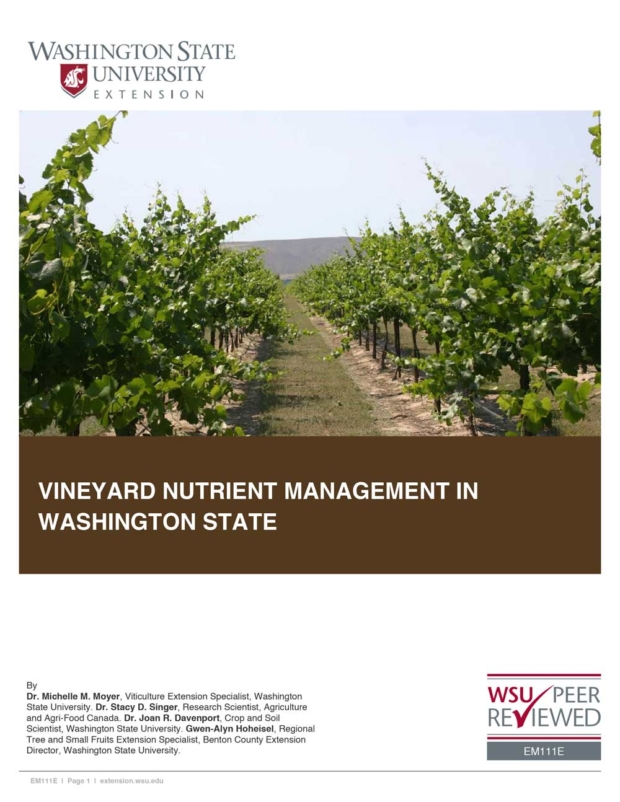Set aside some time.
The new guide for Vineyard Nutrient Management in Washington State is long.
Released in January, the detailed 45-page booklet replaces a four-page document previously nestled inside the pest management guide.

Michelle Moyer
“We … decided to pull it out of there and massively expand it,” said Michelle Moyer, Washington State University’s viticulture extension specialist and one of the authors.
At the request of some veteran Washington wine grape growers for more grape nutrition information, Moyer and a team authored the manual to include diagrams on tissue sampling, photos about where to sample soil, and numerous charts that cover everything from soil pH, key nutrients and the difference between salinity and sodicity (the amount of sodium.)
“I always felt what we had in the spray guide was inadequate,” Moyer said. “It never really answered the questions I would often field from growers. Back in 2012, (growers) indicated that they felt information on grape nutrition was a little light and very hard to find.”
The guide is WSU’s answer. It is geared mostly for growers east of the Cascade Mountains, home to most of the Northwest’s grapes, but also features information from west of the Cascades, a region with much different soil and weather. The guide is a WSU project, but many of the lessons could also apply to grapes in Canada, Oregon or Idaho.
Moyer’s WSU colleagues — Joan Davenport, a crop and soil scientist, and Gwen Hoheisel, a regional tree and small fruits extension specialist — and Stacy Singer, a research scientist at Agriculture and Agri-Food Canada, all co-authored.
Here are a few of the highlights:

The cover of the 45-page “Vineyard Nutrient Management in Washington State” booklet. (Courtesy Washington State University)
—A chart that lists where on the pH scale 12 different crucial nutrients are most available for grape vines to use. Lumped together, a soil pH between 6.5 and 6.8 gives vines their best chance to take up all 12.
—Another chart that maps how to reconcile results of tissue tests and soil tests from the same vineyard. For example, if soil is high in a nutrient but the tissue is low, the grower may have a root or irrigation problem preventing nutrient uptake.
—A photo showing exactly where in drip irrigated vineyards, relative to vines and emitters, to sample soil. Hint: Don’t do it directly below the drip line.
—A chart of recommended preplant nitrogen rates for both juice and wine grapes based on previous land use. Wine grapes need 60 pounds per acre on new land but only 30 on ground with plowed under alfalfa with top growth.
—Several pages of charts illustrating uptake amounts for each nutrient, varying with stages of the growing season.
—A generalized timeline for nutrient applications in established vineyards.
Moyer would like to provide even more information someday.
“It’s a huge area for research possibilities,” she said. “But this was our attempt at trying to pull that information together in a comprehensive source for inland Pacific Northwest growers.”
Longtime wine grape grower Paul Champoux of Prosser is happy with the way the guide turned out.
“The guide is really well-rounded,” said Champoux, one of the growers who had been asking Moyer for more nutritional information. “It has info from thinking about planting a vineyard to plant nutrition for established vines.”
Champoux has since retired from full-time vineyard work but still has five acres of wine grapes on which he is teaching his grandson.
The guide will help growers manage details that matter.
“That’s what makes a fine wine, those little details nutritionalwise that you do,” he said. •
—by Ross Courtney






Leave A Comment